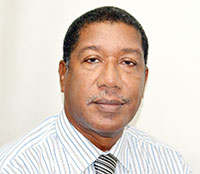PEOPLE generally believe that a toothache suggests that the tooth in question needs to be extracted. However, dentists are taught that there are six indications whereby a tooth must be extracted. Strangely, toothache pain is not one of them. Either pulp infection, pulp stimulation, or pulp exposure usually results in toothache. There is a dental procedure to solve all such circumstances. Your dentist should advise if a tooth should be extracted. Extractions generally cause mutilation, which can never be fully repaired and which the patient often regrets when it is too late.
Surprisingly, despite the pervasiveness of information on the internet, people still believe in untruths associated with dentistry. In fact, dental myths remain one of the most significant roadblocks to achieving good oral health.
These misconceptions promote behaviours that can be detrimental to the health of teeth, gums, and oral tissue. Traditions need to be replaced with facts to ensure the delivery of appropriate oral care. For example, regardless of age, cavities may occur whenever plaque, bacteria, and sugar are present together in the mouth for more than 48 hours. Children usually develop cavities between their teeth and on the chewing surfaces. Older people are especially prone to developing cavities on exposed root surfaces and around old fillings.
If cavities are left untreated, decay will spread into the pulp (nerve) of the tooth, causing an infection. Any infection can spread through the bloodstream to other parts of the body. If the brain becomes involved, death can result. In fact, nine different conditions originating from dental abscesses are known to be fatal. Therefore, cavities can indeed have harmful effects on overall health.
A toothbrush with stiff bristles does not clean teeth better than one with soft bristles. In fact, using a toothbrush with stiff bristles over a long period damages the teeth by wearing away the tooth’s surface. Brushing exposed roots with stiff bristles causes severe damage over a shorter period because roots do not have a hard protective covering of enamel. Using a stiff bristle on gums can damage the tissue and cause them to recede.
Remember that it is not possible to clean the surfaces between the teeth when brushing. Brushing alone cannot guarantee that your teeth will not decay. The teeth should also be flossed to remove plaque from all surfaces altogether. Plaque is associated with tooth decay and gum disease. If not removed daily, plaque can harden into calculus. This rough cement-like substance must then be removed professionally by a dentist or hygienist.
Another thing to consider is that no denture fit is permanent. Over time, changes occur in the bone and soft tissues in the mouth. This affects the way a denture fits. To ensure continued proper fit, the denture wearer should have a dental exam at least once a year so that necessary adjustments can be made. This yearly examination will also help alert the dentist if any adjustments should be made to the denture. The dentures should be removed for at least six hours every day. This allows the tissues to rest and relieves the gums from the pressure. Excessive pressure can cause the supporting tissues of the denture to shrink. Dentures should be kept in water when they are not in the mouth to prevent warping. Wearing poorly fitted dentures can damage the bone and soft tissues, increase infection risk, and expose the wearer to oral cancer.


.jpg)











